| Baja Photo Uploads / Trip Reports Pics from your road trips, fishing and camping adventures. Baja Dogs are welcome... |
|
| #1 |
 
Join Date: 04-02-09
Location: San Diego County
Posts: 856
 |
After resting up from the big hike, later Saturday afternoon we took a drive to see the La Olvidada (The Forgotten) Barite Mine. Along the way and on the return we take a look at the White Slope of springs just east of Arroyo El Volcan.
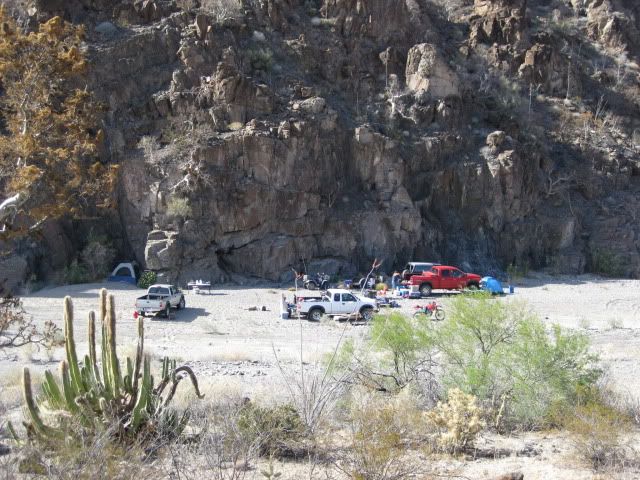 Looking down at our camp area, as we drive east.  We see some boojum trees as we get close to the mine area. 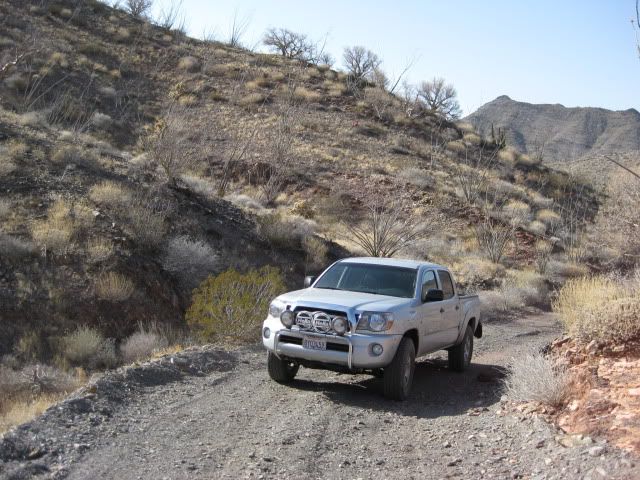 The road to the mine from El Marmol has been recently graded and is 2WD friendly. 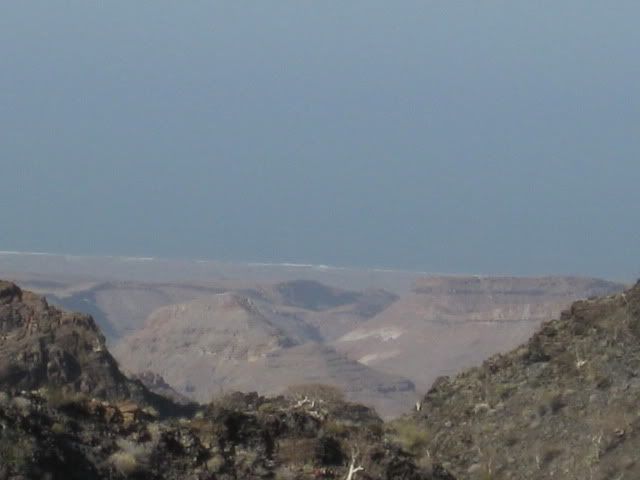 Our first view of the Sea of Cortez (Gulf of California) from the road. 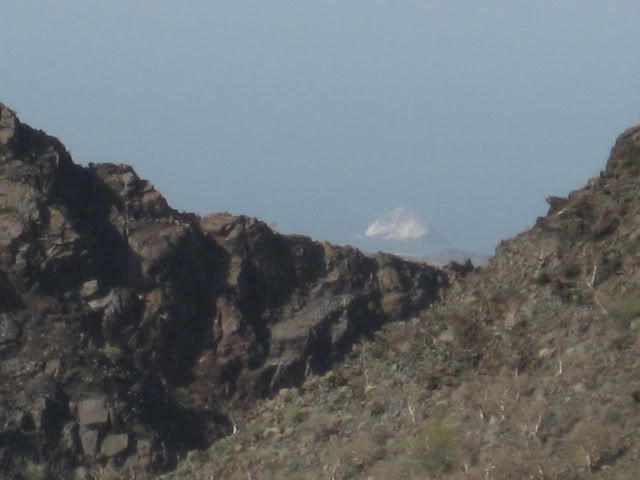 That is Isla El Huerfanito (The Little Orphan).  Other islands come into view from the end of the road, 6 miles from Arroyo El Volcan.   Phil (XRPhlang) and David (dtbushpilot) also ride up to the mine with us.   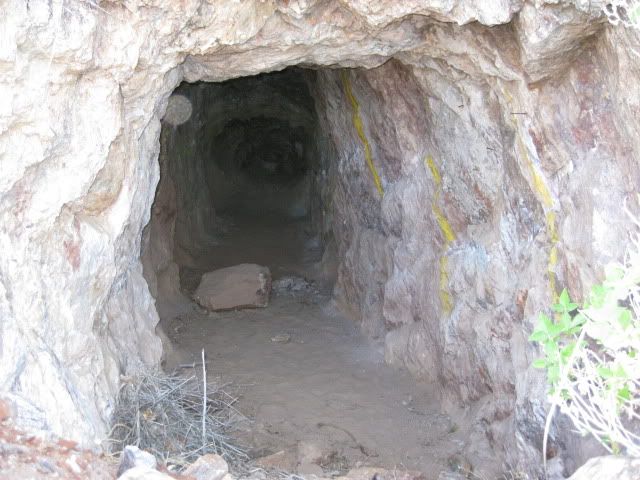  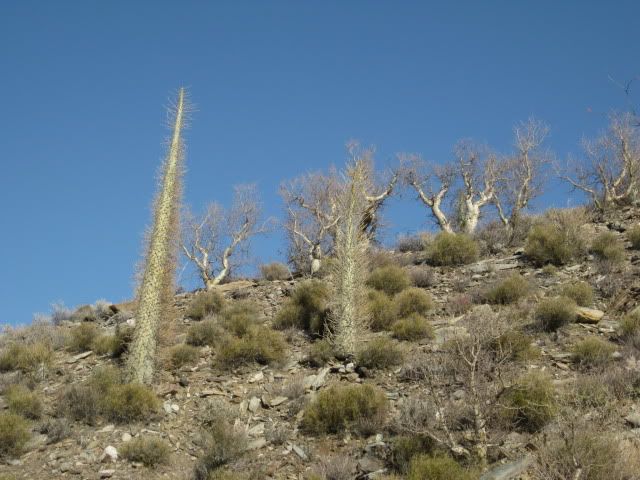 More boojum trees as we head back. 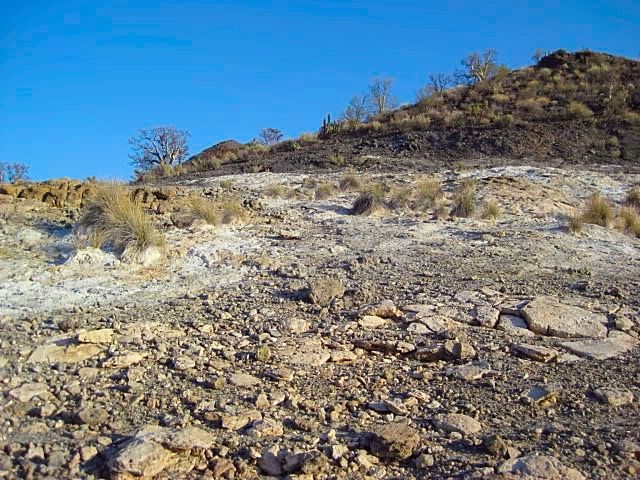 The white slope of tiny springs. 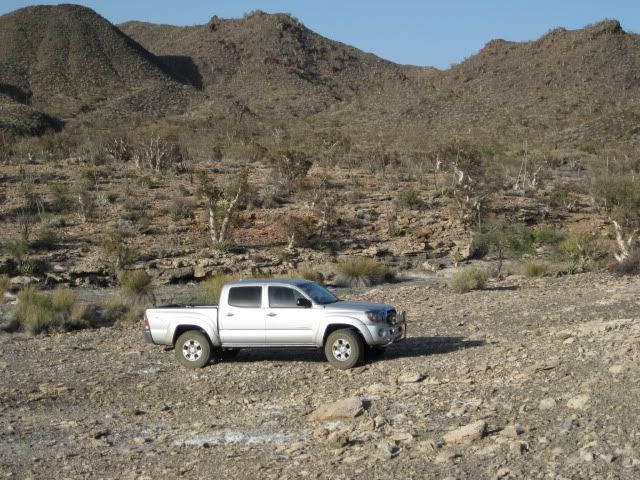  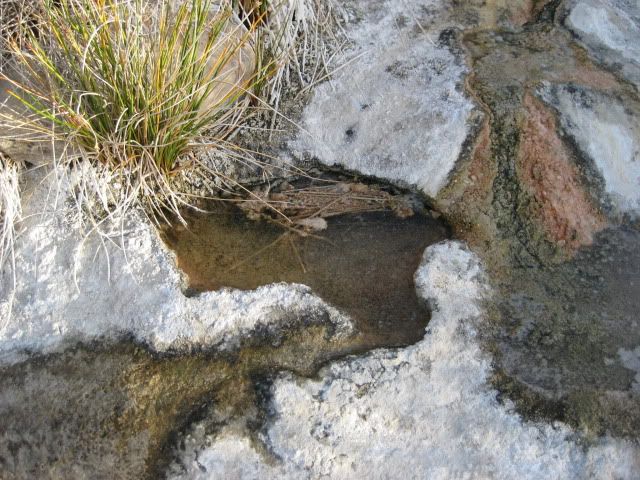 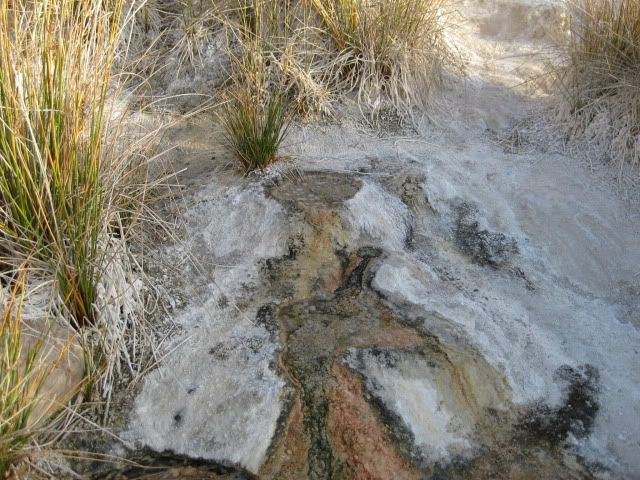 OKAY, who wants to know what barite is? (from Wikipedia) Baryte, or barite, (BaSO4) is a mineral consisting of barium sulfate.[2] The baryte group consists of baryte, celestine, anglesite and anhydrite. Baryte itself is generally white or colorless, and is the main source of barium. Baryte and celestine form a solid solution (Ba,Sr)SO4.[1] The name baryte is derived from the Greek word βαρύς (heavy). The American spelling barite[2] is used by the USGS[7] and more often used in modern Scientific journals including those published by the Netherlands-based Elsevier journals. The International Mineralogical Association adopted "barite" as the official spelling when it formed in 1959[citation needed], but recommended adopting the older "baryte" spelling in 1978,[8] notably ignored by the Mineralogical Society of America. The American Petroleum Institute specification API 13/ISO 13500 which governs baryte for drilling purposes does not refer to any specific mineral, but rather a material that meets that specification, in practice this is usually the mineral baryte. The term "primary baryte" refers to the first marketable product, which includes crude baryte (run of mine) and the products of simple beneficiation methods, such as washing, jigging, heavy media separation, tabling, flotation. Most crude baryte requires some upgrading to minimum purity or density. Baryte that is used as an aggregate in a "heavy" cement is crushed and screened to a uniform size. Most baryte is ground to a small, uniform size before it is used as a filler or extender, an addition to industrial products, or a weighting agent in petroleum well drilling mud UsesSome 77% worldwide is used as a weighting agent for drilling fluids in oil and gas exploration to suppress high formation pressures and prevent blowouts. As a well is drilled, the bit passes through various formations, each with different characteristics. The deeper the hole, the more barite is needed as a percentage of the total mud mix. An additional benefit of barite is that it is non-magnetic and thus does not interfere with magnetic measurements taken in the borehole, either during logging-while-drilling or in separate drill hole logging. Barite used for drilling petroleum wells can be black, blue, brown or gray depending on the ore body. The barite is finely ground so that at least 97% of the material, by weight, can pass through a 200-mesh (75-μm) screen, and no more than 30%, by weight, can be less than 6 μm diameter. The ground barite also must be dense enough so that its specific gravity is 4.2 or greater, soft enough to not damage the bearings of a tricone drill bit, chemically inert, and containing no more than 250 milligrams per kilogram of soluble alkaline salts.[7] Other uses are in added-value applications which include filler in paint and plastics, sound reduction in engine compartments, coat of automobile finishes for smoothness and corrosion resistance, friction products for automobiles and trucks, radiation-shielding cement, glass ceramics and medical applications (for example, a barium meal before a contrast CAT scan). Baryte is supplied in a variety of forms and the price depends on the amount of processing; filler applications commanding higher prices following intense physical processing by grinding and micronising, and there are further premiums for whiteness and brightness and color.[7] Historically baryte was used for the production of barium hydroxide for sugar refining, and as a white pigment for textiles, paper, and paint.[2] Although baryte contains a "heavy" metal (barium), it is not considered to be a toxic chemical by most governments because of its extreme insolubility. =========================================== I got a chunk of rock piled up outside the mine, and it is strangely heavy for its size... like metal would be. Coming next... EL VOLCAN, BAJA'S COLD WATER GEYSER! PART 4: LOST MISSION EXPEDITION 2011 (PART 4) - TalkBaja.com
__________________
Visit my web site: David K's BAJA Adventures Order a copy of our NEW BOOK 'The Old Missions of Baja & Alta California' http://oldmissions.com Last edited by David K; 09-10-13 at 09:54 AM. |
|
| #2 |
 
Join Date: 04-02-09
Location: San Diego County
Posts: 856
 |
Here are two more photos looking into mine shafts at La Olvidada barite mine:
 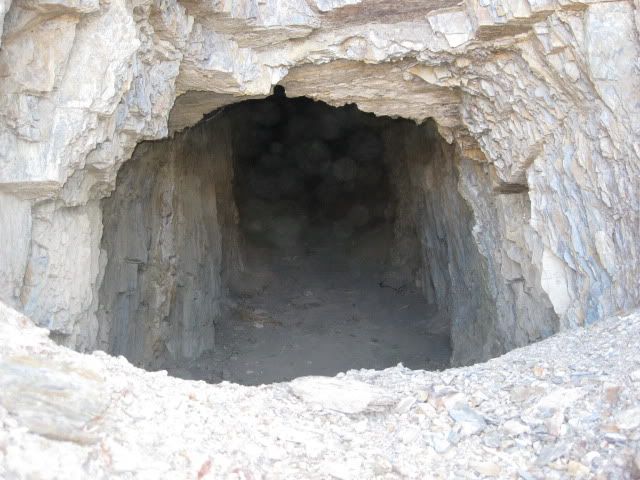
__________________
Visit my web site: David K's BAJA Adventures Order a copy of our NEW BOOK 'The Old Missions of Baja & Alta California' http://oldmissions.com |
|
| #3 |
 
Status: Queso Grande
Join Date: 02-09-09
Location: San Quintin
Posts: 7,148
 |
How deep into the hillside does the mine go? Have done a lot of exploring into old mines up in the California Sierras over the years.
Another property of barite is that when found in clay it expands to several times its initial volume when in contact with water. I believe that barite is the culprit for many homes on the San Pedro hillsides that are now kept level via a complex system of hydraulic jacks and have rendered the homes unsellable...
__________________
TalkBaja.com - Where everybody knows your name and nobody stays on topic... |
|
| #4 | |
 
Join Date: 04-02-09
Location: San Diego County
Posts: 856
 |
Quote:
__________________
Visit my web site: David K's BAJA Adventures Order a copy of our NEW BOOK 'The Old Missions of Baja & Alta California' http://oldmissions.com |
|
|
 Similar Threads
Similar Threads
|
||||
| Thread | Thread Starter | Forum | Replies | Last Post |
| LOST MISSION EXPEDITION 2011 (PART 2) | David K | Baja Photo Uploads / Trip Reports | 7 | 05-23-11 06:45 PM |
| LOST MISSION EXPEDITION 2011 (PART 5) | David K | Baja Photo Uploads / Trip Reports | 4 | 05-19-11 07:38 PM |
| LOST MISSION EXPEDITION 2011 (PART 4) | David K | Baja Photo Uploads / Trip Reports | 6 | 05-19-11 07:32 PM |
| LOST MISSION EXPEDITION 2011 (PART 1) | David K | Baja Photo Uploads / Trip Reports | 2 | 05-19-11 02:10 PM |
| New Discover Baja Magazine with Lost Mission story... | David K | General Discussion | 2 | 08-26-09 05:24 PM |
